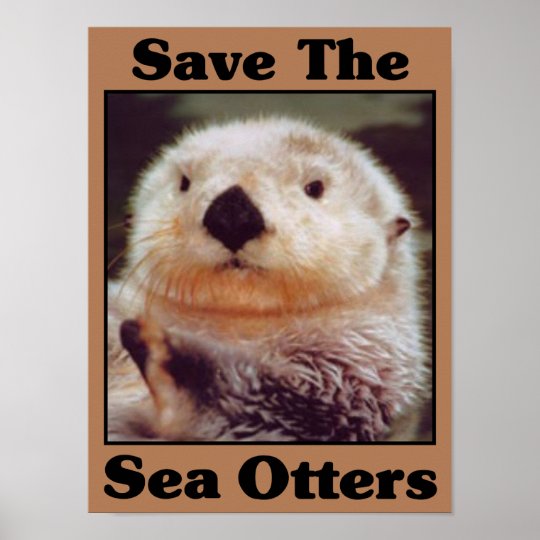The Sea Otter is both the heaviest member of one family and yet the second smallest of another. How can that be?? Well, it is the heaviest member of the weasel family and the second smallest of the marine mammals. Sea otters are small due to the regular layer of blubber found in other marine animals not being present. Sea Otters keep warm via insulation through their dense hair.
Sea Otters once had a population numbering in the hundreds of thousands to some millions. But when otter fur became popular fashion status the demand increased and the number of otters decreased. In 2009 the southern sea otters near California numbered around 2,800. A larger number of otters was located in Alaska, Washington, and Canada. However, the number of sea otters around Russia an Japan have lowered greatly.
Sea otters play an important part in the environment. There job is to maintain the balance of the near shore kelp ecosystems. If this important job is not done then the undersea animals that prey on kelp would destroy the forests of kelp that other marine animals depend upon. In addition when the sea otters protect the kelp forest they also are helping to reduce levels of a greenhouse gas known as atmospheric carbon dioxide. The kelp forest are needed to capture carbon in the coastal ecosystem.
Sea Otters have been listed as an endangered and threatened species and are given full protection in California. Awareness to the loss of sea otters, the important job they do as well as what we can do to save these unique aquatic creatures is needed.
Here are some things that you can do to help the sea otter:
- Reduce, reuse, and recycle whenever you can.
- Dispose of hazardous wastes properly.
- Grow a garden. The roots take in water, reducing the amount of runoff.
- Use nontoxic household cleaning products.
- Don’t litter or dump materials into storm drains.
- Pick up after your pets.
- Use less water.
- Purchase sustainable, recycled, biodegradable goods.
- Volunteer to help or create a beach clean up.
- Get your car oil changed to prevent leaks.
- Donate to the California Sea Otter Fund.
- Learn more about ocean issues and share your knowledge!
The list shares a great variety of items. No matter where you live you can help the sea otter.



No comments:
Post a Comment
I love comments so if you have a minute leave me your thoughts on the above post